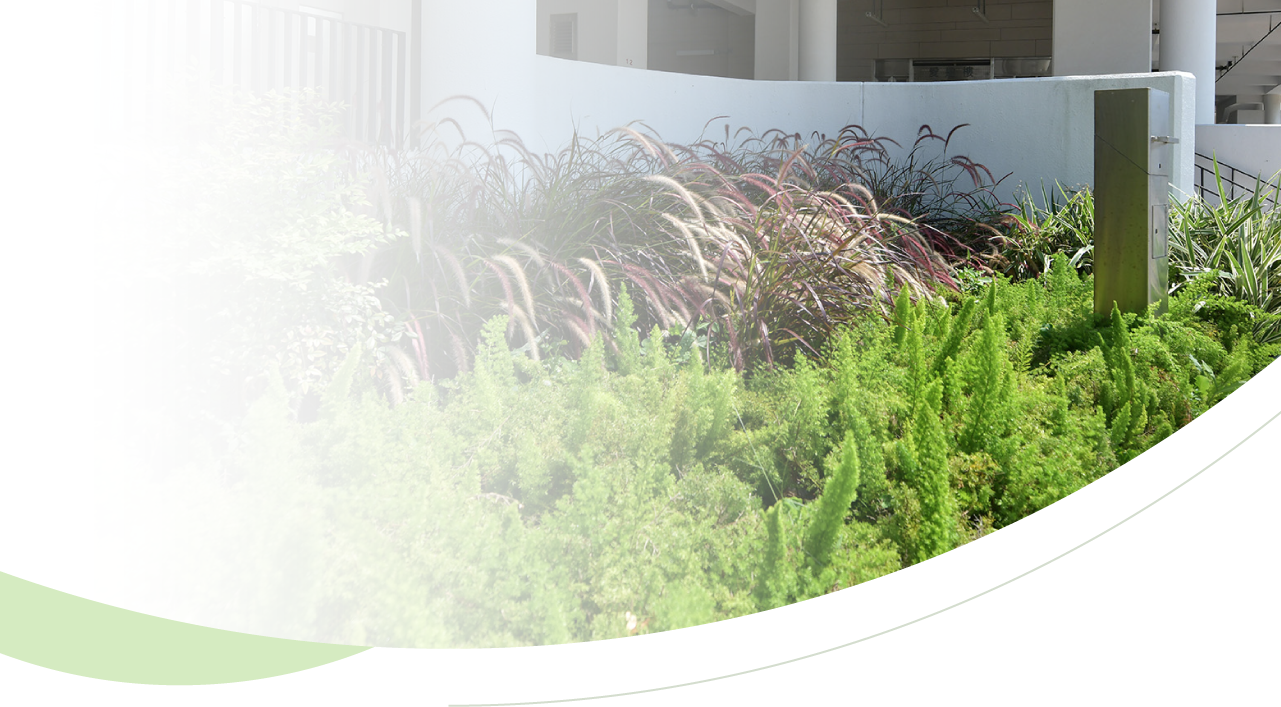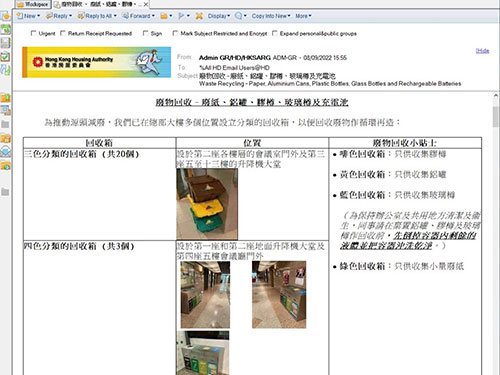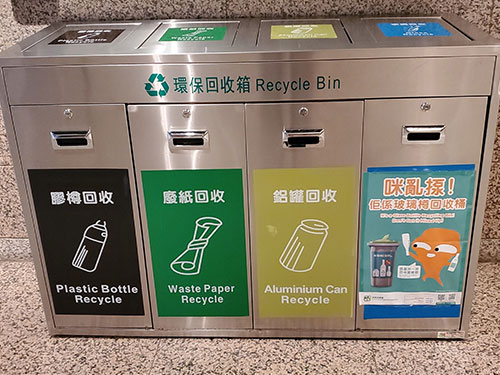
Green Practices
in the Office
-
Measures to be taken in Organising/Attending Events and
Meetings
-
Reduction of Resources Consumption
-
Invitations should be, as far as practicable, in
electronic means so as to avoid unnecessary and
excessive printing of invitation card.
-
Do not use corsages and reduce name badges to an
absolute minimum and confine to those that are
absolutely essential.
-
When attending events, notify the organisers
that government attendees will not use or accept
any corsages and badges should be avoided as far
as practicable. Organisers should also be
notified well in advance that attendees will not
accept souvenirs and gifts.
-
Souvenirs in the form of handicrafts made by the
elderly, children or persons with disability or
certificates of appreciation may be accepted on
an exceptional basis.
-
-
For hosting Chinese cuisine in
restaurants/hotels, the number of main dishes
should be limited to 6 or below to avoid
excessive food.
-
Avoid dishes prepared using food ingredients
that are likely to be captured/harvested in
ecologically unfriendly ways.
-
Avoid using one-off disposable tableware, e.g.
straws, cutlery, food/drink containers and
individually packed wet tissues.
-
Provide drinking water in glasses or through
water dispensers. Bottled water/beverages should
be avoided as far as possible.
-
Avoid using plastic straws and paper
coasters/cup covers. Event participants should
be encouraged to bring their own reusable
tableware.
-
For normal meals during an event, encourage
staff to bring their own meals or schedule meal
breaks instead of ordering lunch boxes.
-
Waste Minimisation and Recycling
-
The use of materials for events and functions
should be carefully chosen to the effect that
the materials can be repaired if damaged and
reused for other purposes after the event.
-
All decoration materials, name badges, tableware
such as cups, spoons, plates, forks, chopsticks,
etc. should be carefully chosen to the effect
that they can be reused. One-off disposable
items should be avoided.
-
Separate all recyclables and keep them clean to
facilitate recycling of waste, and prepare the
plan to collect recyclables and arrange
recyclers to collect them at the end of the
event.
-
Include recycling requirements in the cleansing
contracts (including the type(s) of recyclable
materials, the submission of recycling records,
etc.) and specify the restriction on the
disposal of reusable and recyclable materials
after the event as far as practicable.
-
Avoid offering impractical souvenirs. Discourage
the distribution of reusable shopping bags
(including but not limited to non-woven bags)
except on a need basis. Obtain the participants’
preferences in receiving the souvenirs prior to
the events to allow a better estimate on the
required quantity and avoid excessive production
as far as practicable.
-
Left-over or surplus materials of an event and
even the decoration furniture should be reused
and proper outlets for such materials should be
identified prior to the event.
-
-
Adopt electronic platform (e.g. e-mail, website,
etc.) in disseminating information. If
distribution of printed materials and display of
posters and banners at site are necessary, the
printout quantity should tally with the actual
needs so as to avoid excessive printing and
unnecessary disposal.
-
Avoid one-off promotional materials that cannot
be reused (e.g. pong bong sticks, flags, etc.).
If specially-designed promotional material for
individual event is necessary, preference should
be given to recycled materials or single type of
materials. For recurrent events, the designs and
contents of the relevant promotional materials,
if necessary, should facilitate their recurrent
use.
-
-
Consider holding publicity events at outdoor
venues to make use of natural ventilation and
daylight.
-
If the events are to be held in shopping malls,
give priority to those which have pledged, under
the “Energy Saving Charter”, to maintain their
average indoor temperature between 24 to 26
degrees Celsius in summer months. Please visit
the website of "Energy Saving Charter" at
https://www.energysaving.gov.hk/esc2024/en/charter/index.html, for details.
-
Avoid all unnecessary items such as excessive
decorations and lighting, impractical souvenirs,
excessive printed promotional materials (in
terms of quantity, size and use of ink).
-
-
Select convenient locations such that
participants can arrive at the venue by public
transport.
-
When the use of government/private vehicles is
needed for travelling to the event venue, use
minimum number of vehicles.
-
When using an event organiser or contractor,
include appropriate green requirements in the
service contract.
-
Energy Saving in the Office
-
Switch off electrical devices and equipment (e.g.
photocopiers and computers) which are not in use.
-
Set computers and office equipment in the
energy-saving mode where possible.
-
Identify and replace equipment that is not functioning
properly, e.g. malfunctioned lights, booming fans and
dripping air-conditioners, as such equipment usually
consumes more electricity.
-
Minimize the use of personal electrical appliances
such as fans and table lamps in the office.
-
Switch off some or all of the lighting and
air-conditioning at lunch breaks, when working
overtime and after office hours.
-
Turn on the air-conditioning only when necessary. Set
the temperature at 25.5 degree Celsius and select a
suitable air delivery speed. Dress lightly to minimize
the use of air-conditioning.
-
Keep doors and windows shut when air-conditioning is
on to retain the cool air.
-
Avoid turning on the air-conditioning in advance. If
it is necessary to do so, turn it on no earlier than
15 minutes before the venue is occupied.
-
If a large number of people are expected to be present
at a venue, do not lower the temperature of the
air-conditioning. Instead, set the air delivery mode
to "high" to provide sufficient ventilation.
-
Switch off the lighting, air-conditioning and other
equipment immediately after using conference/function
rooms.
Energy saving notice near lighting switch in
conference rooms
-
Draw the blinds or curtains to keep out direct
sunlight in summer. Make use of natural lighting in
other seasons to reduce the use of electrical lighting
during daytime.
-
Use the staircases instead of the lift when going up
or down one or two floors where possible.
-
Encourage the use of compact fluorescent lamps.
Replace electromagnetic ballasts of fluorescent lamp
by electronic ballasts.
-
Install motion sensors to automatically control on/off
of lighting in common areas such as toilets.
-
Reduce, where appropriate, the illumination in common
areas of offices and car parking areas.
-
Replace, where appropriate, electrical appliances with
Grade 1 or Grade 2 Energy Labels.
Refrigerator with Grade 1 energy label
-
Paper Saving and Paper Waste Reduction Measures
-
-
Think twice before you make a photocopy. If it
is not essential, try to manage without one.
-
If a photocopy is unavoidable, reduce the number
of copies to the minimum necessary.
-
Print/photocopy on both sides of clean paper.
-
Do not photocopy books and manuals as the
copyright may be infringed.
-
Only documents which are likely to be of genuine
interest to other officers should be photocopied
for circulation. Routine correspondences should
not be circulated.
-
Use paper printed on one side for drafting.
-
Try to prepare, revise and submit drafts for
clearance in soft copies. Print hard copies only
for the final version of the document.
-
Buy photocopiers and printers with double-sided
printing function.
-
Before using a photocopier, make sure that the
setting is the desired one.
-
Always remember to clear machine settings after
photocopying.
-
Avoid printing e-mails and other e-documents
unless for record purposes. If printing of
e-mails is necessary, try to trim the e-mail
chain and only print the ones needed.
-
-
Avoid using paper listed below, which has
no/limited recycling outlets, in all office
operations including in-house or outsourced
printing jobs-
- thermal paper;
- paper coated with wax or plastic;
- adhesive removable notes;
-
cartons and wrappers for food and drinks,
etc.;
- foil gift wraps;
- paper cups, plates and cutlery;
- napkins, tissues and paper towels;
-
adhesive labels, tapes and stickers; and
- photo paper.
-
Use recycled paper instead of virgin paper.
-
Reuse single-sided paper, envelopes, loose
minute jackets, tags and other paper office
items.
-
- Use e-faxes as far as practicable.
-
Use emails for communication as far as
practicable.
Using email to disseminate the information
-
Make better use of electronic means in
disseminating information e.g. uploading
publications onto website/homepage using CD-ROM,
QR Code and/or through emails.
-
Post circulars and notices on bulletin boards,
in particular e-bulletin boards accessible by
communal terminals.
-
Commenting or editing of documents on-screen
using different fonts or color by different
parties.
-
Send greeting cards in festive seasons by
electronic means.
E-christmas card for Housing Authority
-
Adjust the margin and font size of documents as
far as practicable in order to optimise use of
paper for printing.
-
Use the “Print Preview” function to check the
layout and style of documents before printing.
-
Adopt electronic templates of letterheads,
memoranda and forms to avoid pre-printing for
adjustment.
-
Incorporate an always up-to-date letterhead
design on all letters, thereby eliminating
outdated, leftover paper letterhead stock.
-
Handling of Fax Machine and Faxes
-
Program fax machine to eliminate separate
confirmation journal.
-
Do not use a leader page for outgoing faxes if
the document is self-explanatory. The name of
the recipient and sender and the fax number can
be written on the front page of the document.
-
If a fax leader sheet is necessary, a shorter
header form should be used to avoid excessive
blank space.
-
Avoid sending original documents after they have
been sent by fax or e-mail.
-
Delivery/Circulation of Documents
-
Send unclassified documents without envelopes.
-
Use transit envelopes where a cover is necessary
for despatch of documents between and within
government offices.
-
Circulate documents using routing slips rather
than sending out individual copies.
-
Examine critically who should be on the
distribution list of the documents and eliminate
outdated or unnecessary recipients.
-
-
Put a single-sided paper collection box (yellow
box) and a waste paper recycling box (green box)
near the photocopiers.
-
Maintain a sufficient number of collection boxes
at convenient locations within office area.
-
Put scrap paperboard, newspaper and office paper
only into recycling bins. If practicable, waste
paper should be further sorted into these three
categories to facilitate recycling.
-
Remove the wax-coated or plastic-coated
covers/inside pages of magazines for recycling
under the category of newspaper.
-
Paper recyclables should be kept dry and clean.
Adhesive tapes on paperboard and staples/paper
clips on office paper should be removed as far
as possible.
-
-
Review list of publications including
departmental reports and keep the number of
paper publications to the absolute minimum.
-
Encourage sharing of document in meeting
especially when there are more than one
representatives from a B/D.
-
Waste Avoidance and Reduction Measures
-
Separate all recyclables, such as metal cans,
plastics, waste paper, glass bottles and other
recyclables, from non-recyclables for easy
collection. Keep the recyclables clean to facilitate
their downstream handling.
-
Place the separated recyclables into recycling bins
for the cleansing contractor or local recyclers to
collect.
-
Bring your own mug instead of using disposable paper
cups or consuming water/beverages in plastic
bottles.
-
Reuse the pen shafts by using refills instead of
simply throwing away the whole ballpoint pens.
-
Recycle ink/toner cartridges of printers/fax
machines/photocopiers.
Recycling bins for four types of waste
-
Collect materials such as damaged, old and unwanted
compact discs (with all the data and information on
the diskette deleted), and other plastic wastes,
e.g. CD/DVD cases, plastic film wraps, caps and
shafts of used pens, broken plastic rulers, etc. for
recycling.
-
Use rechargeable batteries instead of disposable
batteries as far as practicable.
-
Use the greener clutch pencils and refills instead
of traditional wooden pencils.
-
Use less glue that contains benzene and ethyl
acetate – paper clips and pins will often do.
-
Use less correction fluid that contains the ozone
depleting 1,1,1-trichloroethane.
-
Reduce the use of fluorescent pens by underlining
the text instead.





